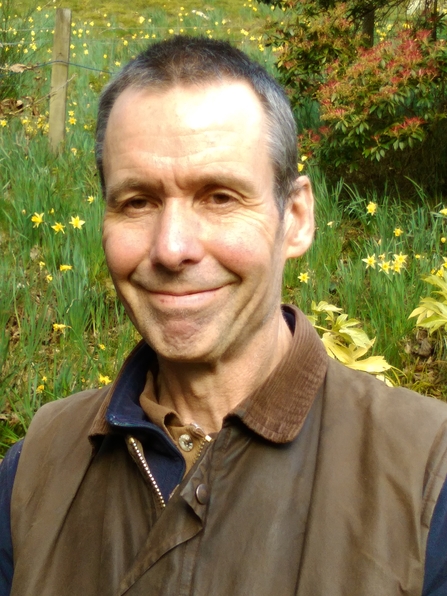The open structure of these incredible flowers comprise fine white filaments and anthers (male reproductive organs) and the tripartite stigma (female reproductive organs) which protrudes from the centre of the flower head. Honey bees are drawn into these landing pads; a magnetic force of nature.
Passiflora are native to South America and introduced throughout the tropics. Although non-native, diversification can be a positive thing for wildlife. This subject area between planting native and non-native species can become too complicated for words.
I have just planted Passiflora caerulea into our newly developing flower border which is sited south/west, against an attractive wooden trellis as a means of support for climbers.
Passiflora caerulea is a hardy species of Passion flower, some species are better suited for cultivating within conservatories. Passiflora will thrive in full sun to part shade, but it's important not to let the soil dry out. Cultivation requirements are so important in terms of getting the very best from every climber, shrub, perennial, annual which may be geared for attracting wildlife into the garden. If we fall short on that important part, we fall short on wildlife. I think its a simple guide to remind ourselves.
I will cover the pruning technique of Passiflora next spring to achieve maximum flowers for maximum bees to visit these flowering gems.
It may seem hard to believe when you plant a climber such as this in the month of May that it will produce any flowers at all in the first season! But keep moist, feed with liquid seaweed feed (organic and wildlife friendly) once a week, at the base into the roots, and you'll be surprised at the results nature will reward you with. Stand back and wait for the bees to arrive, they love it!
Passiflora will keep the bees happy from mid to late summer, even into autumn with the remarkable flowering displays. If lucky, Passiflora will reward you with edible decorative egg shaped fruits with the colour tones of orange/gold. Expect some of these fallen fruits to be pecked at from the birds which visit the garden.
Kevin is a lifetime Plantsperson, Horticulturist, Gardener & Conservationist, whose work spans over 40 years. He has worked for the National Trust, BBC Gardeners World and as a Head Gardener (North Cotswolds). Kevin is currently developing a 2 acre wildlife garden in Cartmel. Prior to that he developed a wildlife garden in Bowness On Windermere for three and a half years. The garden opened in 2019 under the National Gardens Scheme and proceeds were raised for Cumbria Wildlife Trust.
Kevin has a strong passion for wildlife gardening and is a member of Cumbria Wildlife Trust, Butterfly Conservation, and the RSPB. His passion and deep-rooted interests extend to wildlife & habitat conservation.
Kevin plans in the near future to start his own Wildlife Gardening Consultancy business.


